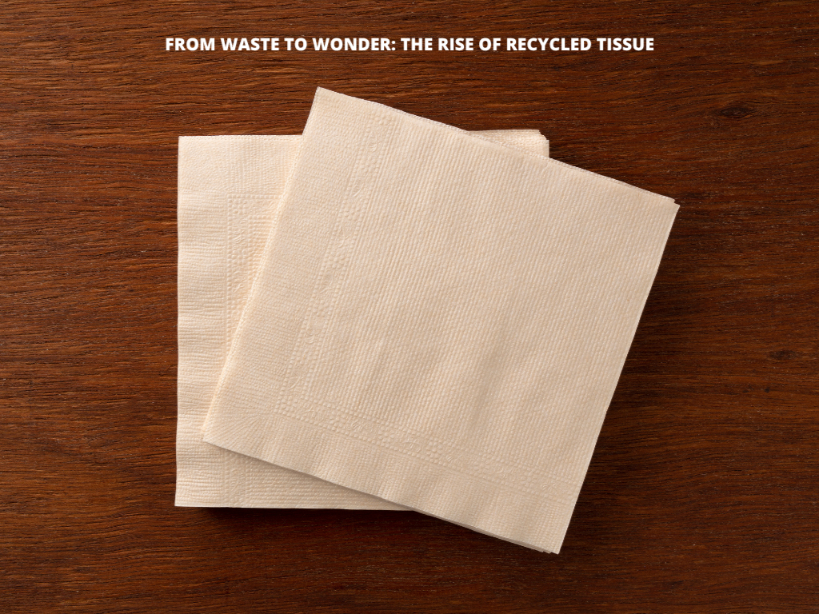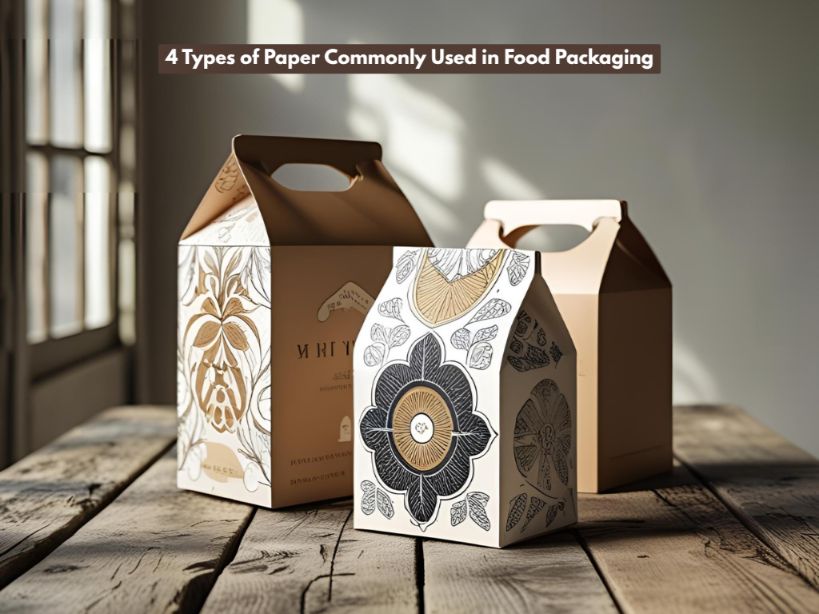From Waste To Wonder: The Rise Of Recycled Tissue
Coniferous, a company committed to sustainability, recognizes the importance of selling recycled tissue products in its operations. Recycled tissue offers many benefits to the environment, and by using it, we can reduce its environmental impact and demonstrate its commitment to sustainability to its customers and stakeholders.
Recycling has become an important part of our daily lives, as it helps to reduce waste and conserve natural resources. One area where recycling has made a significant impact is in the production of tissue products, such as toilet paper, paper towels, and napkin tissues. Recycled tissue is made from post-consumer & pre-consumer waste paper that has been collected, sorted, and processed into new tissue products. In this article, we will explore the benefits of recycled tissue and how it is produced.
How Recycled Tissue is Produced?
Recycled tissue is made from post-consumer & pre-consumer waste paper that has been collected, sorted, and processed into new tissue products. The process begins when paper is collected from homes, businesses, and other sources, and taken to a recycling center. There, the paper is sorted by type and grade, and contaminants such as staples, tape, and plastic are removed. The sorted paper is then baled and transported to a paper mill.
At the paper mill, the baled paper is fed into a large machine called a pulper, which uses water and chemicals to break down the paper fibers. The resulting pulp is then refined and cleaned to remove any remaining contaminants and to create a smooth, consistent texture. The pulp is then mixed with water to create a slurry, which is used to produce new tissue products.
The slurry is fed onto a paper machine, where it is spread out into a thin layer and passed through a series of rollers to remove excess water. The resulting sheet of paper is then dried and wound onto large rolls. The rolls are then cut into smaller rolls or sheets, depending on the desired product, and packaged for distribution.
Benefits of Recycled Tissue
There are many benefits to using recycled tissue products. First and foremost, recycled tissue helps to reduce the amount of waste sent to landfills. According to the Environmental Protection Agency (EPA), paper and paperboard products account for the largest portion of municipal solid waste in the United States, with approximately 67.2 million tons generated in 2018. By using recycled tissue, we can help to divert this waste from landfills and reduce the environmental impact of waste disposal.
Recycling paper also requires less energy. According to the EPA, producing recycled paper requires 40% less energy. This means that by using recycled tissue, we can help to reduce our energy consumption and greenhouse gas emissions.
Another benefit of using recycled tissue is that it can be just as soft and absorbent as virgin tissue. Many people believe that recycled tissue products are rough and scratchy, but this is not necessarily the case. Recycled tissue can be just as soft and comfortable as virgin tissue, depending on the manufacturing process and the quality of the raw materials used.

Environmental Benefits
Using recycled tissue paper has a significant impact on the environment. By using recycled paper products, we reduce the amount of waste going into landfills. Here are some facts and statistics that highlight the environmental benefits of recycled tissue paper:
![]() Recycling one ton of tissue paper reduces the harvest of 17 trees, 7,000 gallons of water, and 4,100 kilowatt-hours of electricity.
Recycling one ton of tissue paper reduces the harvest of 17 trees, 7,000 gallons of water, and 4,100 kilowatt-hours of electricity.
![]() If every American household replaced just one roll of toilet paper with recycled toilet paper, it would reduce the harvest of 423,900 trees.
If every American household replaced just one roll of toilet paper with recycled toilet paper, it would reduce the harvest of 423,900 trees.
 Recycling one ton of tissue paper reduces the harvest of 17 trees, 7,000 gallons of water, and 4,100 kilowatt-hours of electricity.
Recycling one ton of tissue paper reduces the harvest of 17 trees, 7,000 gallons of water, and 4,100 kilowatt-hours of electricity. If every American household replaced just one roll of toilet paper with recycled toilet paper, it would reduce the harvest of 423,900 trees.
If every American household replaced just one roll of toilet paper with recycled toilet paper, it would reduce the harvest of 423,900 trees. Recycled tissue paper has a 64% lower environmental impact.
Recycled tissue paper has a 64% lower environmental impact.
At Coniferous, we understand the importance of sustainability, and we’re committed to providing businesses and individuals with high- quality, eco-friendly tissue paper products. Our recycled tissue paper is made from waste as well as sustainably sourced pulp, and our suppliers use a closed-loop manufacturing process to minimize waste and reduce environmental impact. We offer a range of products, including napkin tissue, toilet paper, and paper towels, all of which are soft, strong, and absorbent.
Conclusion
Recycled tissue paper is an eco-friendly and sustainable solution for various purposes. The benefits of recycled tissue paper are plenty, from reducing waste to conserving natural resources and lowering costs for businesses. With recycled tissue paper, you can help to minimize your ecological footprint while still fulfilling your hygiene and sanitation needs. We hope that this article has provided valuable insights into the significance of using recycled tissue paper and how it contributes to a more sustainable future.


